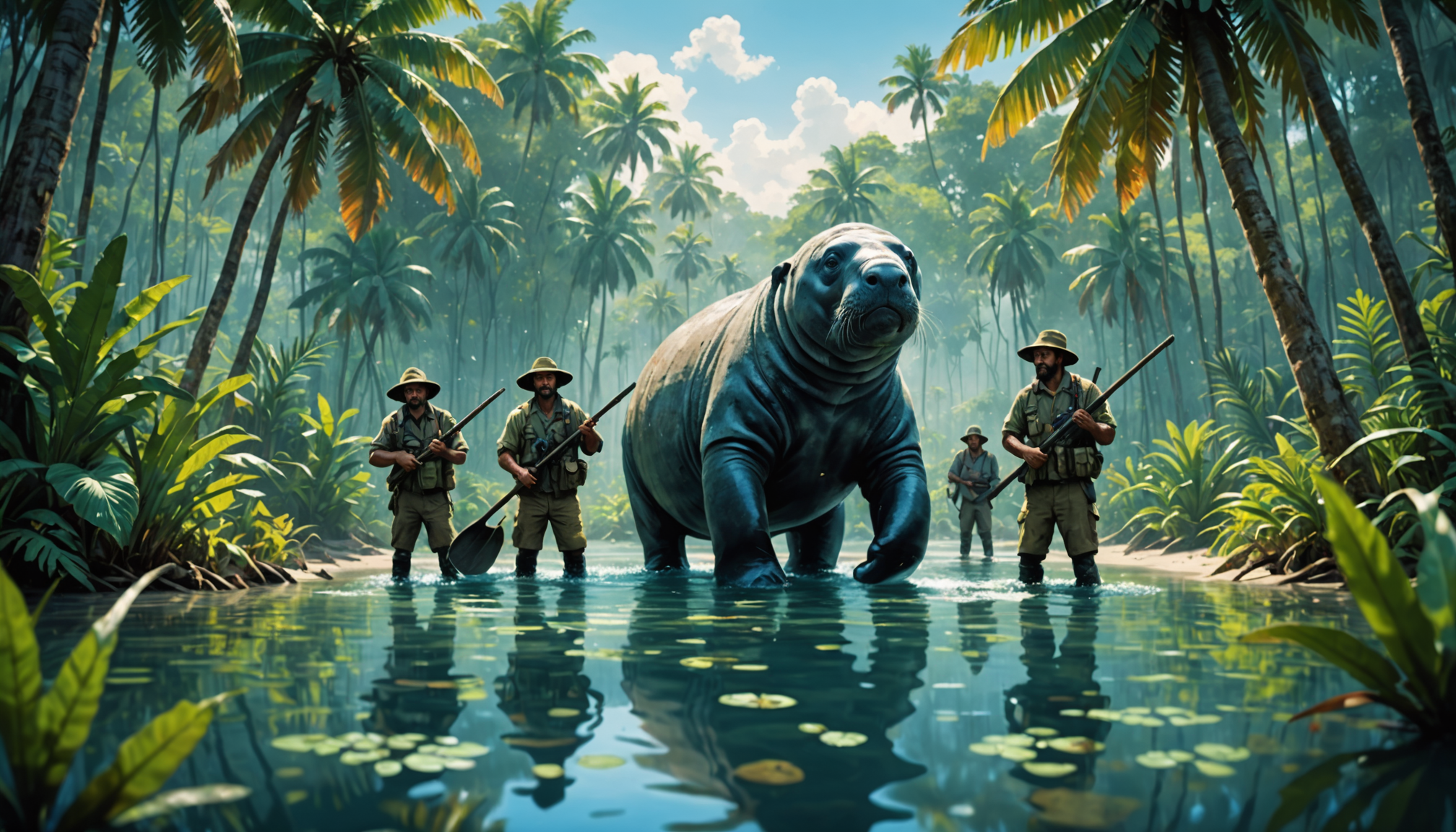
Conservation and Sustainable Development in Barra do Mamanguape, Brazil
Introduction
The fishing community of Barra do Mamanguape, located on Brazil’s northeastern coast, has undergone a significant transformation from hunting manatees to protecting them through ecotourism initiatives. This shift aligns closely with several Sustainable Development Goals (SDGs), including SDG 14 (Life Below Water), SDG 15 (Life on Land), and SDG 8 (Decent Work and Economic Growth).
Historical Context and Ecological Significance
Barra do Mamanguape’s estuary, where river meets sea, provides warm and calm waters ideal for manatees. Historically, during Brazil’s colonization, manatees were hunted extensively for their meat, skin, and oil, which were used locally and exported to Europe.
- Manatee meat was considered similar to pork by local fishers.
- Manatee populations declined drastically, leading to their classification as critically endangered.
Conservation Efforts and Community Engagement
In response to the critical endangerment of manatees, conservation efforts intensified, including the establishment of the nonprofit organization Viva o Peixe-Boi Marinho in 2013. The organization’s approach emphasized community involvement and education, which is essential to SDG 17 (Partnerships for the Goals).
- Engagement with local fishers to share knowledge and raise awareness.
- Conducting lectures and participatory fishing activities.
- Promoting a shift in attitudes from hunting to protecting manatees.
Outcomes and Socioeconomic Impact
The community’s evolving relationship with manatees has generated positive environmental and economic outcomes, supporting SDG 1 (No Poverty) and SDG 12 (Responsible Consumption and Production):
- Villagers now report stranded manatees for rescue instead of hunting them.
- Ecotourism centered on manatee watching attracts visitors, boosting local income through accommodation, food, and services.
- Community members actively participate in monitoring and rehabilitating manatees, with approximately 60 rescues since the 1990s.
Challenges and Future Directions
Despite progress, threats remain, particularly from boat strikes causing injuries to manatees. Efforts to mitigate these risks include:
- Advocating for stronger regulations on boat traffic near the coastline, where over 80% of manatee injuries occur.
- Promoting stricter enforcement of existing protected zones to prevent vessel incursions.
- Encouraging broader societal responsibility for manatee conservation, emphasizing the urgency of collective action.
Conclusion
The transformation of Barra do Mamanguape’s community from manatee hunters to conservation advocates exemplifies the integration of environmental stewardship with sustainable economic development. This case highlights the critical role of community engagement and partnerships in achieving the Sustainable Development Goals, particularly those related to biodiversity conservation, sustainable livelihoods, and inclusive growth.
For further insight, watch the video “How manatees won over an entire village” here.
Banner image: Manatee in Barra do Mamanguape, courtesy of Projeto Viva o Peixe Boi-Marinho.
1. Sustainable Development Goals (SDGs) Addressed or Connected
- SDG 14: Life Below Water – The article discusses the conservation of manatees, a marine species, and the protection of their habitat in the estuary.
- SDG 15: Life on Land – The article highlights the protection of a critically endangered species and the restoration of local biodiversity.
- SDG 8: Decent Work and Economic Growth – The shift from hunting to ecotourism supports sustainable economic activities and livelihoods for the local community.
- SDG 12: Responsible Consumption and Production – The community’s change in behavior towards sustainable use of natural resources and conservation awareness aligns with responsible consumption.
- SDG 17: Partnerships for the Goals – The collaboration between local fishers, scientists, and nonprofit organizations exemplifies partnerships to achieve conservation goals.
2. Specific Targets Under Those SDGs Identified
- SDG 14
- Target 14.2: Sustainably manage and protect marine and coastal ecosystems to avoid significant adverse impacts.
- Target 14.4: Effectively regulate harvesting and end overfishing to restore fish stocks.
- SDG 15
- Target 15.5: Take urgent action to reduce the degradation of natural habitats and halt the loss of biodiversity.
- Target 15.7: End poaching and trafficking of protected species.
- SDG 8
- Target 8.9: Promote sustainable tourism that creates jobs and promotes local culture and products.
- SDG 12
- Target 12.8: Ensure that people have the relevant information and awareness for sustainable development and lifestyles.
- SDG 17
- Target 17.17: Encourage and promote effective public, public-private and civil society partnerships.
3. Indicators Mentioned or Implied to Measure Progress
- Number of manatees rescued and rehabilitated: The article states that around 60 manatees have been rescued since the 1990s, indicating a measure of conservation success.
- Incidence of boat strikes on manatees: Tracking injuries caused by boats, including the statistic that more than 80% of strikes occur within 200 meters of the coastline, measures threats to the species.
- Community engagement and behavioral change: The shift from hunting to conservation and ecotourism reflects increased awareness and sustainable practices, which can be assessed through surveys or participation rates.
- Economic indicators related to ecotourism: Income generated from ecotourism activities such as local accommodation, food, and services supports SDG 8 targets.
- Enforcement of regulations: Monitoring compliance with boat traffic restrictions in protected areas can serve as an indicator of governance effectiveness.
4. Table of SDGs, Targets, and Indicators
| SDGs | Targets | Indicators |
|---|---|---|
| SDG 14: Life Below Water |
|
|
| SDG 15: Life on Land |
|
|
| SDG 8: Decent Work and Economic Growth |
|
|
| SDG 12: Responsible Consumption and Production |
|
|
| SDG 17: Partnerships for the Goals |
|
|
Source: news.mongabay.com






